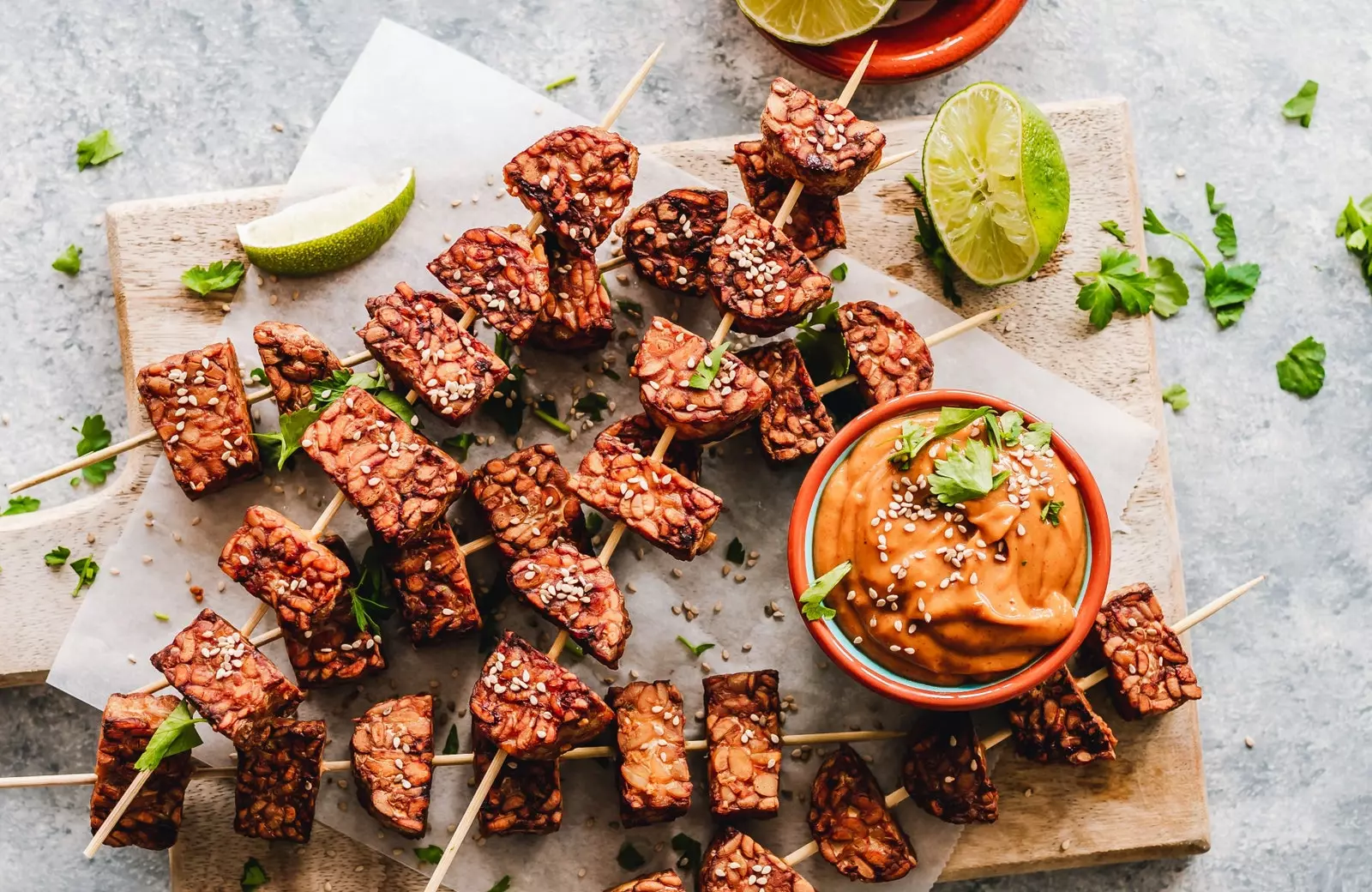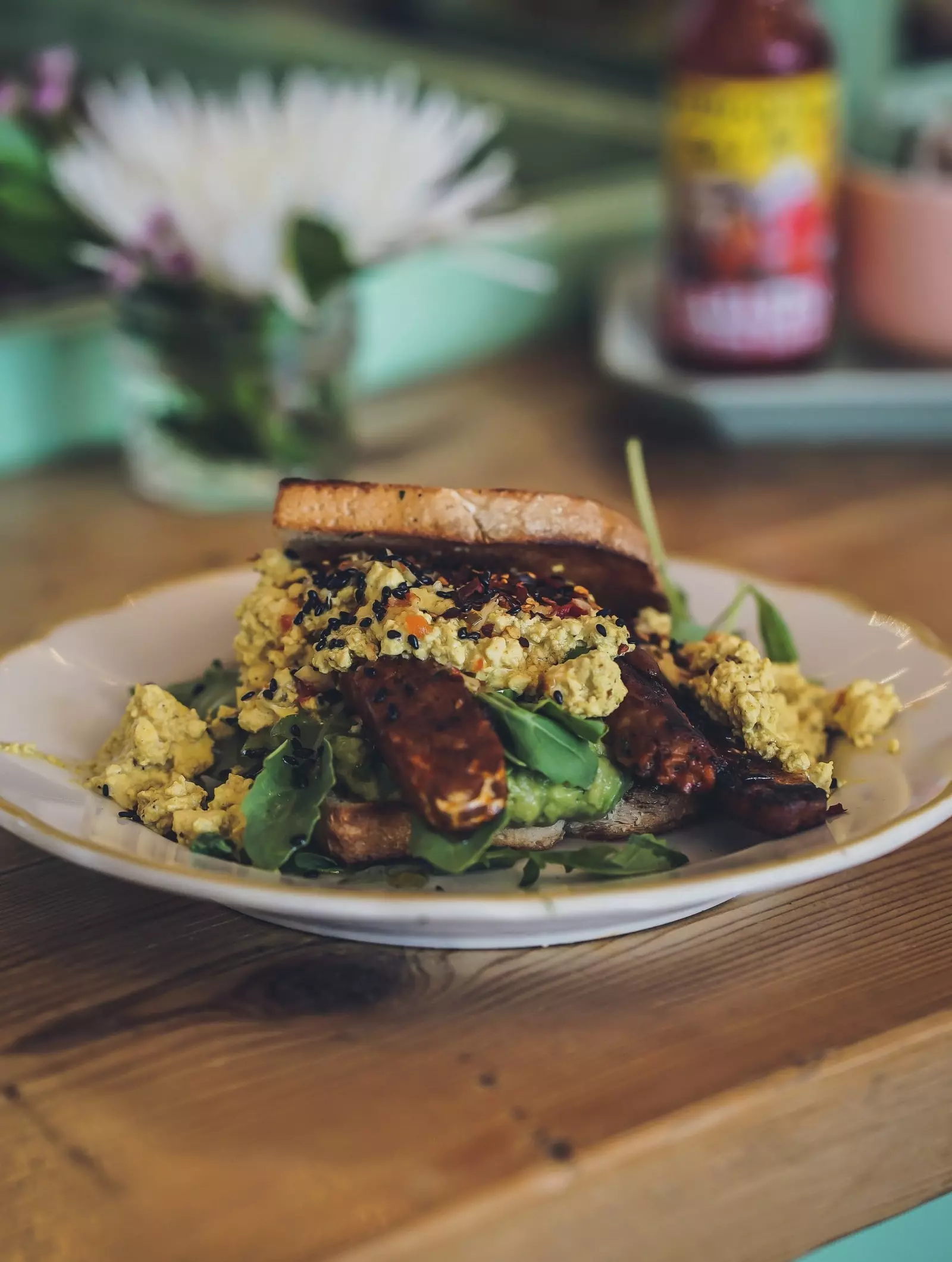
Tempeh, the vegetable protein from Indonesia.
It is a reality that we are increasingly responsible for the impact of our diet on the planet In which we live. And despite the fact that the consumption of meat and fish still prevails today, more people are becoming aware of the matter and decide to reduce it considerably from their routine and even there are many who eliminate animal proteins forever from their lives. They do so by incorporating other types of alternatives with which they can play and innovate between the stoves, without the need to harm any animal along the way.
According to the latest study The Green Revolution (prepared by the Lantern innovation consultancy and published in 2019), veggies (flexitarians, vegans and vegetarians) in Spain have revolutionized the food market of recent years and evolved to reach the following figures: “veggie diets have grown by 27% in the last two years, with more than 800,000 new consumers adopting this type of diet”.
And as there are more and more followers, it is usual that as the years go by we know more plant-based protein options with which to cook both at home and in any restaurant. Tempeh is one of them. Did we discover it? If you haven't already done so, of course.

Tempeh is obtained from soybeans and is fermented.
TEMPEH, THE VEGETABLE PROTEIN FROM INDONESIA
Originally from Indonesia, it is common for it to be consumed among its locals (especially on the island of Java) and it is also common in other cuisines of Southeast Asia. Although in Spain it occurs among veggies, in Asian countries it is an ingredient that does not understand eating styles and everyone eats equally.
As happened with other gastro proposals such as jackfruit, in recent years tempeh has gained a lot of strength within our borders, thanks in part to its great versatility when cooking it.
But what is it exactly? “Tempeh is made (in general) with fermented soybeans and a fungus called Rhizopus. Although it is true that there are tempeh from other foods, such as chickpeas, cereals, coconut and seeds, for example. It sounds strange, but it is very easy to prepare and very rich on the palate”, tells us Victoria Lozada, dietician-nutritionist.
Victoria Lozada is an expert in vegan and vegetarian nutrition, author of several books (Good Nutrition, Everyone at the table and Why do you eat the way you eat) and creator of the Instagram account @nutritionisthenewblack which can boast of having more than 222,000 followers at the time these lines are written.
“I discovered this ingredient when I came to Spain and started looking for different protein sources to vary and not always end up cooking the same thing. Consulting several vegan cooking blogs, they mentioned it a lot, and I found it in herbalists, so I tried it and I loved it”, continues Victoria.
Tempeh has a crunchy and firm texture along with an intense and strong flavor which is usually found in blocks or as fillets in fresh or frozen format. There is also the option of buying it marinated with the intention of offering a product with more flavor. When it comes to keeping it, well in the fridge for four or five days It holds us perfectly or in the freezer that will last us much longer.
Its acceptance is such that on Instagram under the hashtag #tempeh there are almost 300,000 mentions to this ingredient with recipes of all kinds that are most appetizing. So don't hesitate to take a look at all of them!
A FOOD PACKED WITH BENEFITS
Thanks to the soybean fermentation process, it is a gastronomic proposal that retains all vegetable proteins (even surpassing those of tofu) so it is an excellent substitute for animal meat. **
"Also, tempeh provides a lot of fiber so it is good for our intestinal bacteria and favors our intestinal transit”, says Victoria Lozada.
Also keeps cholesterol in check and contains the recommended daily amounts of iron and magnesium, making it the ideal product to help regulate the proper functioning of our body.
**HOW TO COOK IT? **
don't be fooled its appearance reminiscent of the typical nougat that we do not stop enjoying during the long Christmas festivities, its flavor has nothing to do with that of this sweet and due to its way of cooking it (and, of course, of tasting it) it has much more travel because it can be enjoyed in hundreds of combinations and presentations.
At the Almalibre Açaí House restaurant they have been cooking with this ingredient since its inception as the main source of protein in many of its dishes. Five years ago they undertook this exciting adventure as a restaurant business that mixes healthy eating with other passions such as traveling or sharing moments with loved ones.
When it comes to cooking it both in the kitchens of restaurants and in our homes, it can be included in all kinds of recipes such as salads, rice dishes, soups, sautéed vegetables in wok format, sandwiches, brochettes or as a main dish. And best of all, it can be done in the pan, baked, marinated, barbecued, grilled... Creativity is the key!

At the Almalibre Açaí House restaurant they use it in many of their dishes.
In Almalibre Açaí House it is common to see it in a great variety of options, but if there is a star dish of the place it is their red rice and tempeh burgers, homemade and super healthy.
“As a recommendation, a way that we love to To cook tempeh is to brown it on the griddle and marinate it with a little sweet soy sauce.” they continue. This recipe is perfect to serve as a single ingredient as an appetizer or entree. The finer we cut it, the crunchier it will be!
"We created a place where we love that our customers feel at home, comfortable, relaxed and ready to enjoy the most delicious dishes," they comment from the establishment itself. Today they can boast of offering their delicious vegan and organic recipes in cities like Valencia, Madrid, Barcelona, Granada and Miami. And surely in many more soon!

The red rice and tempeh burger is the star dish at Almalibre Açaí House.
**TEMPEH, TOFU AND SEITAN... HOW ARE THEY DIFFERENT? **
For those people who are not familiar with these foods, at first they can be complex and difficult to differentiate, but nothing is further from the truth.
The first way to distinguish them is that tempeh has fermentation, while the other two do not.
"Also, seitan is made from gluten (wheat), while the other two are made from soy. They are made in different ways and have quite different colors. The textures are also very diverse. Tempeh is tougher, tofu will always be softer, and seitan is more elastic. And finally, the taste has nothing to do with it. Tempeh tastes like dried fruit, tofu is more bland (it takes on the flavor of whatever is used to make it), and seitan tastes more like wheat . But they are flavors that are difficult to describe, the best thing is to try them”, invites Victoria Lozada. Said and done.
